WHEN Barack Obama dropped by on the campaign trail to sample the Creole cuisine at Leah Chase’s legendary restaurant in Treme, Dooky Chase, he got a vote of no confidence from the proprietor. “Oh no, you don’t,” she told him straight as Mr President sought to slap some hot sauce on his gumbo.
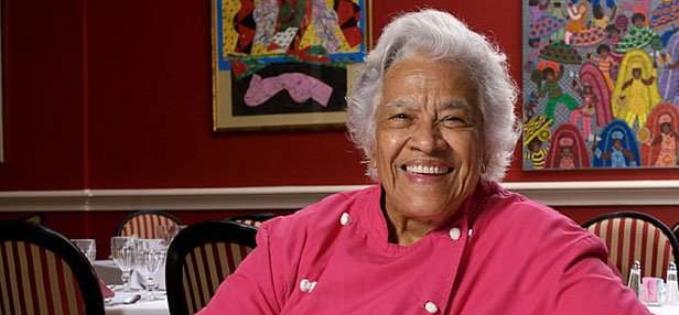 The great Leah Chase; below, her restaurant
The great Leah Chase; below, her restaurant
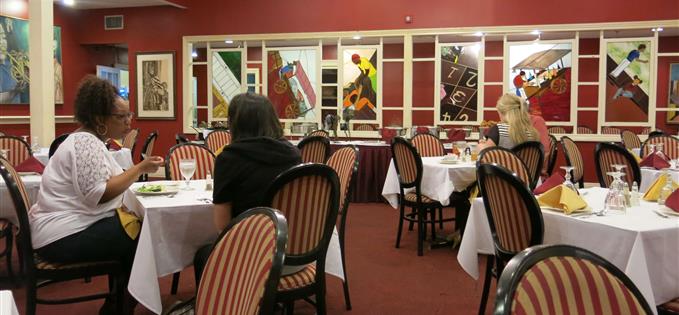
New Orleans has innumerable, competing versions of gumbo, a flour-thickened stew of meat or shellfish with onions, peppers and okra. Award-winning Leah, now 92 and still active in the kitchen, is one of the few chefs left cooking a gumbo z'herbes, packed full of greens, for Lent. The African/American art on the walls only accentuate her strong ties to the Creole tradition with its roots in the slave trade and emancipation.
The spooky Italian section served as location for the acid freak-out sequence in Easy Rider
She’s been in situ at this restaurant named after her husband since 1945, the only hiatus the anguished restoration after Katrina. We couldn’t leave the Crescent City without visiting this flag bearer for Black heritage (during segregation years all New Orleans civil rights meetings were held here) and, of course, sample the bargain lunchtime buffet of catfish, dirty rice, boudin and, of course, fried chicken. Perfect preparation for the long drive out to Lousiana’s Cajun Country that followed.
Tourists get warned off the Treme (pronounced tru-MAY) district, just a 15 minute walk from the French Quarter and outrageous, tourist-thronged Bourbon Street but a world away. Our lodging, Voodoo Villa, was at the end of slowly gentrifying Ursulines Avenue, across the cultural watershed that is Rampart Street. Even after dark we felt safe in this predominantly black, slightly ramshackle neighbourhood, where jazz was born. The prostitutes of the Storyville red light district famously wore jasmine perfume; clients coming away were said to smell ‘jazzed up’.
Treme’s lovely Louis Armstrong Park celebrates the great jazzman and the music he was a supreme exponent of. There’s a ‘Satchmo’ statue and the Mahalia Jackson Theatre, but the most poignant section is Congo Square. Here slaves and free ‘people of colour’ were allowed to gather throughout the 19th century for African drumming and dancings sessions. Brass bands came later and the evolution into jazz.
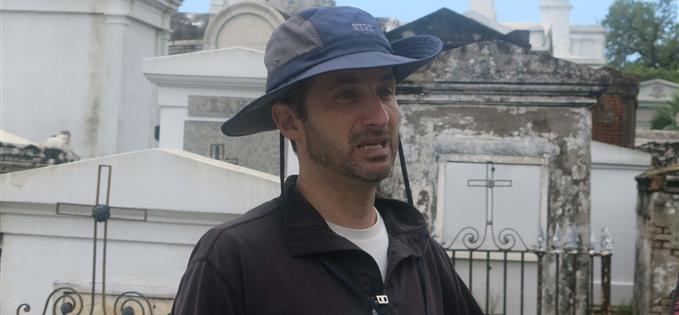
Congo Square was the culmination of a Cemetery Voodoo Tour, with guide David Reichard a non-sensational exploration of the voodoo phenomenon synonymous with the city even today, mixing West African and Catholic religious practices. The main city cemeteries are now only accessible via such organised tours; without ours we would never have visited St Louis Cemetery No1, the city’s oldest dating back to 1789 and an eerie enclave isolated from the city all around.
It’s a true necropolis, housing the dead in a labyrinth of above ground tombs, necessary in a city below sea level. Many historical notables rest here, but visitors are inevitably drawn to the tomb of legendary Voodoo Queen Marie Laveau (1794-1881), who receives daily offerings from those seeking her favour. Gifts include cigarettes, coins, candles, Mardi Gras beads, and alcohol, while, for no authentic Voodoo reason, some adherents scratch three “X”s on the side of the memorial. Just as, back in the Sixties, the spooky Italian section served as the location for the acid freak-out sequence in the film, Easy Rider. Authorities don’t allow such license these days.
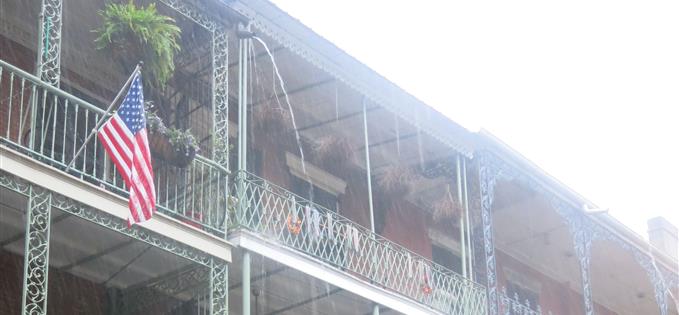
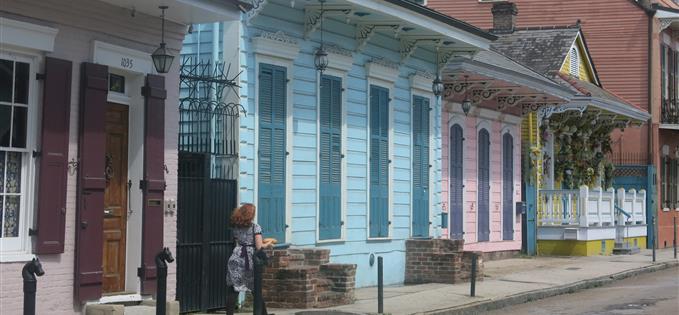 Walking into the French Quarter from Treme after the rain; below, Faulkner House
Walking into the French Quarter from Treme after the rain; below, Faulkner House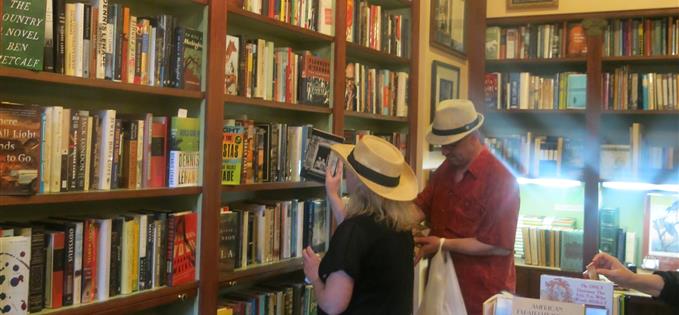
We were lucky with the tour’s timing, a sunny interlude in a day of torrential downpours, mini-floods in the streets as the drains packed in, overflow spouts from the steep French Quarter roofs drenching the unwary. Fortunately, New Orleans has some great spots to sit out the storm. Faulkner House Books in Pirate’s Alley behind St Louis Cathedral was once home to the great author William and offers an atmospheric literary browse.
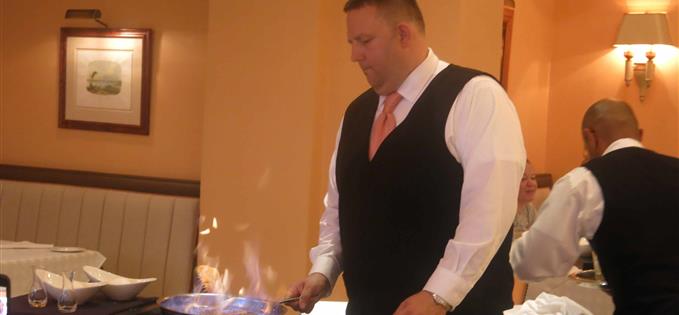 Bananas Foster flambeed at table; below, gumbo Brennan's style
Bananas Foster flambeed at table; below, gumbo Brennan's style
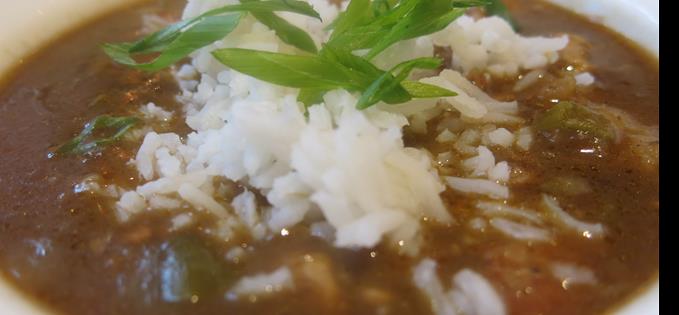 Gumbo... well one version
Gumbo... well one versionBrunch at Brennan's, as the heavens truly opened, was a great introduction to a distinctively New Orleans style of fine dining. Open since 1945, it was shut for a long time thanks to litigious family feuds (the Brennans are restaurant royalty here), but now it’s back with a real sense of style in its vivid pink quarters on Royal Street, much the classiest thoroughfare in the French Quarter.
We had a whale of a long morning being cosseted, first with champagne, then with Cajun Bloody Marys, accompanying pan-roasted veal sweetbreads, seafood fil gumbo with oysters, Creole-spiced shrimp salad, eggs sardou with spinach and parmesan, with sides of grits and buttermilk biscuits. We passed on the house speciality, Bananas Foster, where the fruit is flambeed with butter, brown sugar, cinnamon and rum and served with vanilla ice cream ($8 a head, min two people per order).
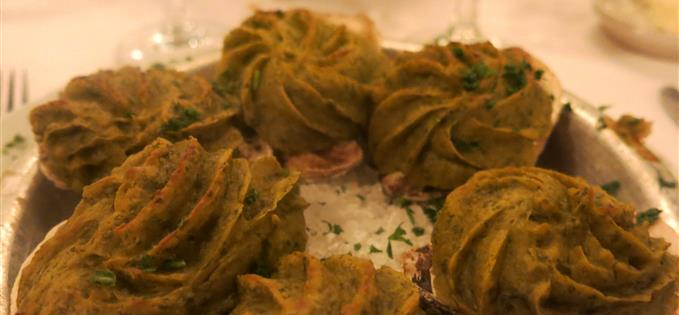 Oysters Rockefeller at Antoine's
Oysters Rockefeller at Antoine'sEven more of an institution is Antoine’s around the corner. Celebrating its 175th anniversary, it’s the oldest restaurant in the States still run by the same family and flags that heritage up big time across all its 14 sumptuously decorated dining rooms. Service is formal but not fawning and house speciality is a dish they invented – Oysters Rockefeller, an absurdly rich (and decidedly expensive) treatment of the bivalve, baking them in the half shell in a dense green sauce. Everyone from President Roosevelt and Judy Garland to Pope John Paul II has eaten Antoine’s food. Their pictures cover the walls.
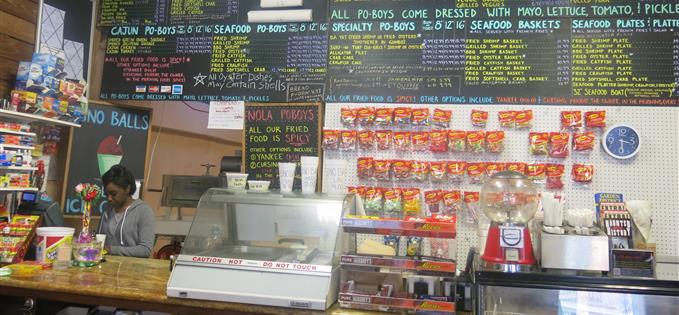 NOLA Poboys counter
NOLA Poboys counterA quite different FQ dining experience came at the (relatively) quiet end of Bourbon Street when we tried out New Orleans’ iconic sandwich, the Po’ Boy at the clean but decidedly basic NOLA Poboys, which serves not only the traditional hot roasst beef version, dripping with gravy but 45 other varieties. We went for catfish and fried shrimp and, for a handful of dollars they were delicious, served with salad and pickles on the city’s curious crumbly version of French bread.
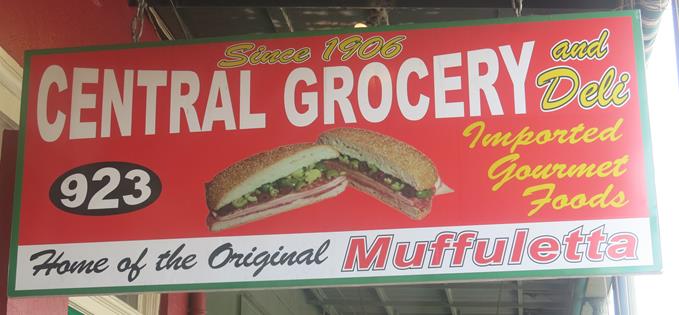
We missed out on an Italian-influenced rival to the Po’ Boy, the Muffuletta, which pils salami, mortadella, provolone cheese, olives and veg on to a huge round sesame bread. Alas Muffuletta epicentre, the Central Grocery was shut when we got there.
Further up Decatur Street, almost on the Mississippi embankment is the well-spring of another revered local delicacy, the Beignet. Each year the bustling Cafe du Monde (open 24 hours seven days a week, except Christmas) has serves millions of these deep-fried donuts, doused in powdered sugar since it opened in the French Market in 1862. It’s an essential messy tourist experience; just don’t wear a black top. The beignet comes with chicory coffee, an acquired taste I have never acquired.
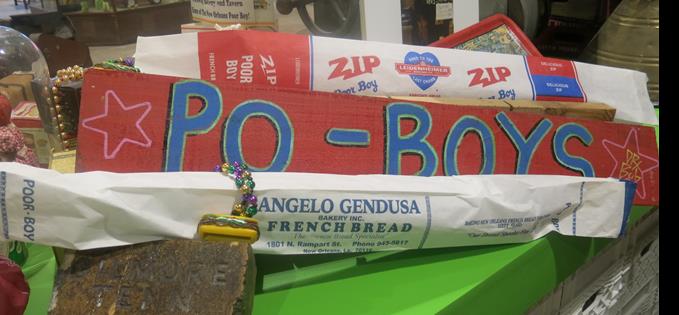 SOFAB exhibit celebrating the Po'boy sandwich
SOFAB exhibit celebrating the Po'boy sandwichOf course, all this munching around (like jazz and Voodoo) needs to be put into foodie context. I suggest a trip across Canal Street to the non-profit Southern Food and Beverage Museum (SOFAB). It’s the pet project of lawyer turned food historian Liz Williams and offers a series of fascinating tableaux exploring the varying regional food and drink styles of all the Southern States with a hands-on teaching kitchen and attached cafe.
It also houses the Museum of the American Cocktail. We needed some hands -on experience in this field, too. America’s first cocktail, the Sazerac, was create here in 1838 by Antoine Peychaud, who named it for his favourite French brandy, Sazerac-de-Forge, Within a couple of decades rye whiskey replaced brandy in the mix and local favourite absinthe was added.
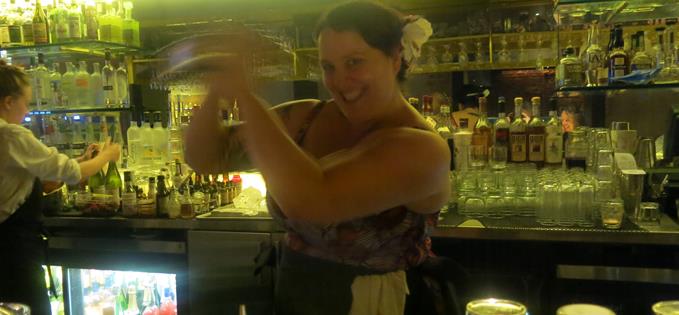 Abigail Gullo shakes it up at SoBou (south of Bourbon)
Abigail Gullo shakes it up at SoBou (south of Bourbon)At the current most cutting-edge cocktail bar, SoBou in the W Hotel on Chartres Street, internationally acclaimed mixologist Abigail Gullo serves up brandy and whiskey versions and a heck of a lot more alongside some fusion food much at odds with the conservative dining we’d encountered during the rest of our stay. Ebullient New Yorker Abigail has been a cabaret singer and plied her bar trade in Dublin. She is evidence of how New Orleans attracts free spirits (sic), who get hooked and stay.
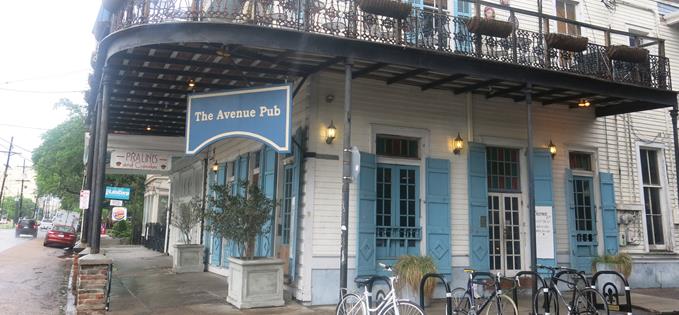 The Avenue has a great craft beer selection
The Avenue has a great craft beer selectionIndeed the city is compatible with trends across the States and beyond. Craft beer? All those IPAs and Saisons? Look no further than cool pub The Avenue on St Charles Avenue.
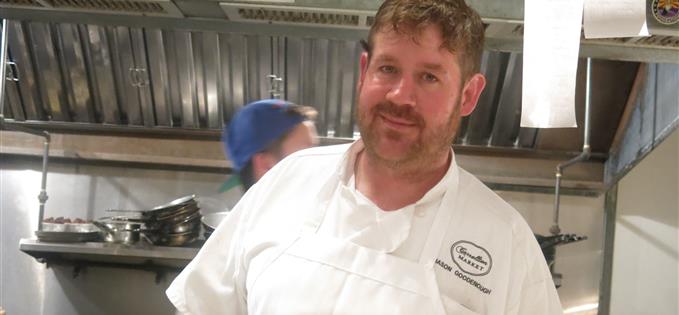 Chef Jason at Carrollton Market
Chef Jason at Carrollton MarketIt’s on the oldest existing street car line, the St Charles, which trundles you west to the edgy student quarter of Riverbend/Carrollton. Here Jason Goodenough, at his restaurant Carrollton Market, creates his twist on Southern Food, sourcing from the farmer’s markets. Wicked cocktail, too, in stripped down environs a far remove from Antoine’s.
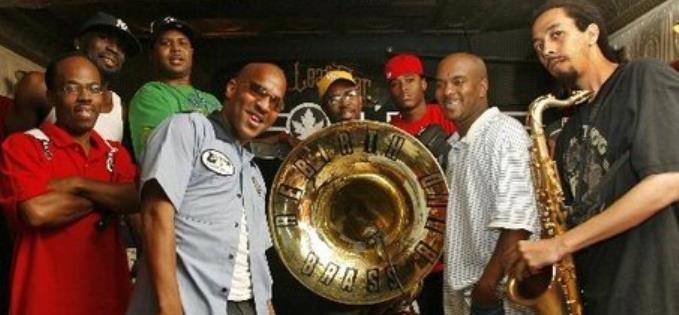 Rebirth Brass Band are an amazing musical presence
Rebirth Brass Band are an amazing musical presenceIt’s also a short walk from perhaps the musical musts in the Crescent City – every Tuesday nights the amazing Maple Leaf Bar on Oak Street hosts the Grammy Award-winning Rebirth Brass Band, who take the New Orleans brass inheritance into a whole new dimension. We happened to be there on a Tuesday and were thankful. The band was born on the streets of Treme.
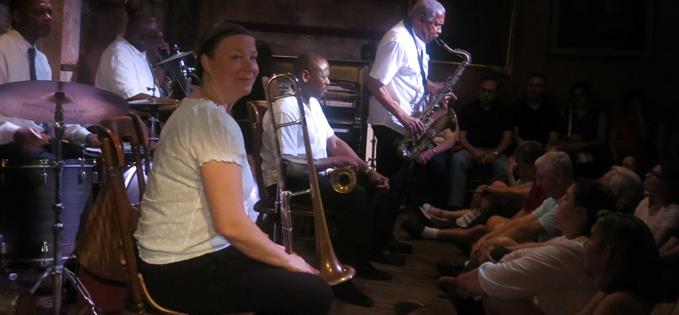 Preservation Hall keeps the trad jazz heritage alive
Preservation Hall keeps the trad jazz heritage aliveTrad jazz survives even amid the booze-fuelled fleshpots of Bourbon Street, notably at Preservation Hall. Outlet for some of the city’s finest jazz players, this cramped, atmospheric venue looks like it has been around since Louis Armstrong was a lad, but it was actually founded in 1961. We had a wonderful night, here, too, then went in search of a late night Jambalaya (distant Cajun cousin of a paella) at K-Paul’s Louisiana Kitchen in Chartres Street. Best served with a Sauce Piquant – just like New Orleans.
Fact file
Getting there
Neil Sowerby flew direct from Manchester to Atlanta with Virgin Atlantic, which runs a daily service. He flew on from Atlanta to New Orleans with Delta.
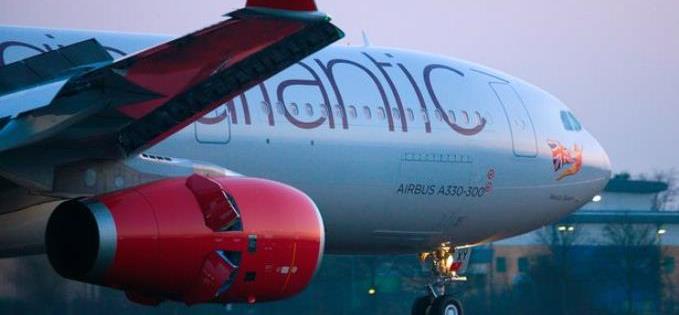
Getting around
Alamo has car hire branches throughout the USA. All-inclusive rates are available via www.Alamo.co.uk/USA
Staying there
Neil Sowerby stayed in Treme at the Voodoo Villa on Ursulines Avenue, booking through www.airbnb.co.uk. To get a feel for the area, buy a DVD of the first series of HBO’s ‘Treme’, which is set in aftermath of Hurricane Katrina and is strong on the city’s food and music. For a literary homage to the wilder side of the Big Easy, buy John Kennedy Toole’s Confederacy of Dunces.
New Orleans
For up to date information about the ‘Crescent City’ visit the website of the New Orleans Convention and Visitors Bureau or their Facebook site, Twitter @NewOrleansCVB and Instagram @VisitNewOrleans.
Visit DiscoverAmerica.com to start your own USA adventure.
Neil Sowerby parked at Manchester Airport. For full details of parking there visit this link.











